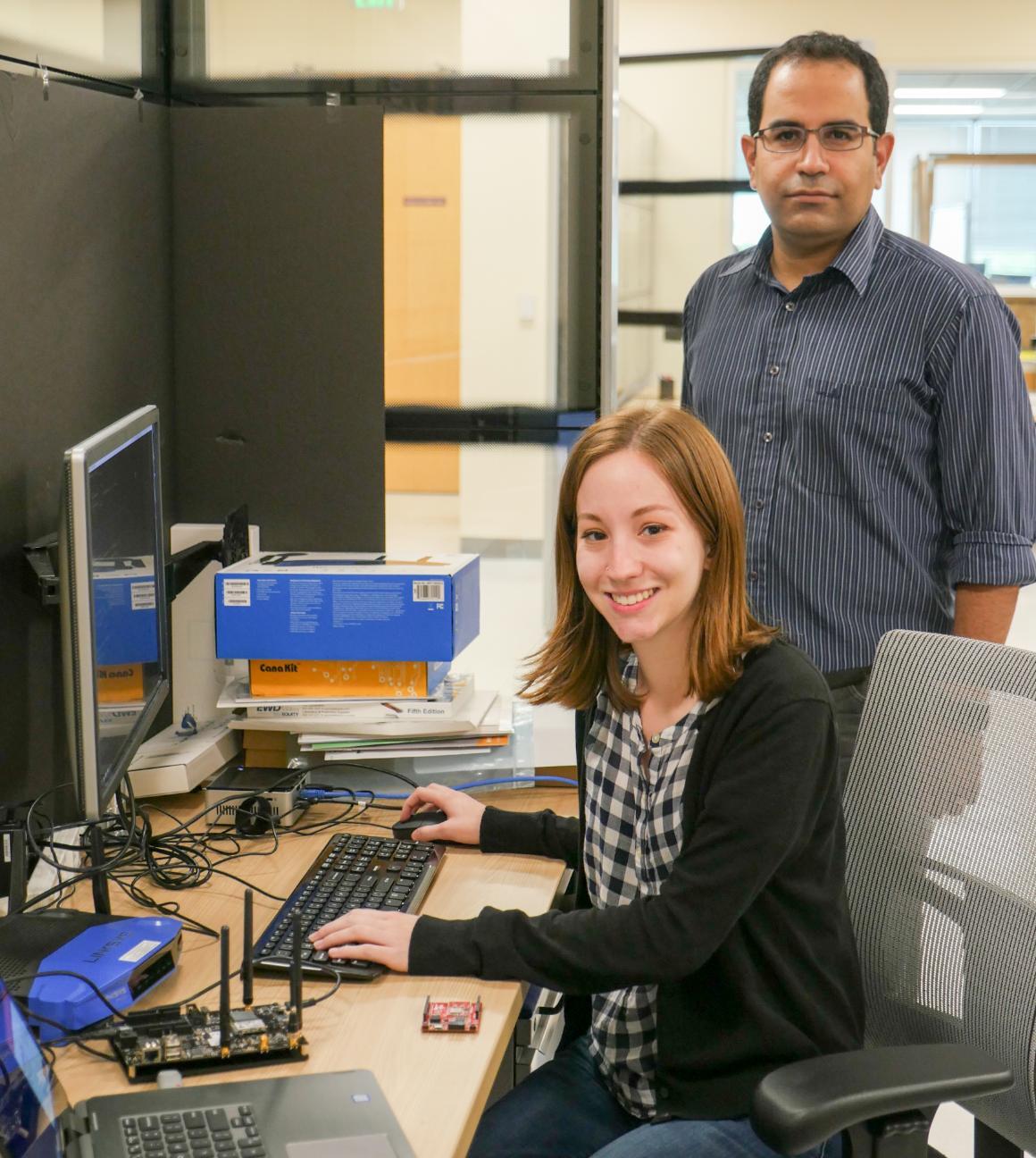
The Internet of You
The Internet of Things (IoT) is becoming ubiquitous in our lives—your electric car sends a text when it's fully charged, and your home's thermostat and lights can activate as you pull into the driveway, but what if your doctor could activate an insulin injection for you remotely, or send an ambulance to your home if alerted that your heart rate is dropping? Those are possibilities computer engineering's Assistant Professor Behnam Dezfouli and senior Angelina Poole are tackling as they work to enable existing WiFi infrastructures for medical applications.
Dezfouli has been active in this field of wireless sensor networks for over a decade (before it was known as IoT) and has designed various systems for smart agriculture, homes, and cities, but he found medical applications of IoT interest him most. "About two years ago, I developed a wireless system for collecting data from a patient's body and transmitting it to a hospital’s proprietary wireless system, but I was always interested in using existing wireless infrastructure for these types of applications," he said.
For her part, Poole, who is also pursuing a bioengineering minor, was intrigued by the project because it touches on both the medical and computer engineering fields. "It’s something that’s closely related to what I want to do in the future. Implementing my knowledge of computer engineering in the medical field is of great interest to me," she said. Last spring, Poole applied and was awarded a Clare Boothe Luce Grant supporting women in engineering and since then she and her professor have been hard at work.
"Normally, to collect vital signs from a patient, many wires must be attached to the body," explained Dezfouli. "We want to remove those wires and create a small device to be worn on the body that connects with WiFi to collect data on a central aggregation point, such as a smart phone, which then transmits that data to the patient’s own access point, or to the doctor’s, or hospital’s, and then to the cloud."
The two biggest problems with creating such a system? Making it energy efficient (so it doesn’t drain the batteries of your iPhone while it is collecting your vitals), and ensuring data is delivered in a timely and reliable manner. To address these problems, the pair collaborated with engineers at Cypress and Samsung to develop different software installed on various devices, setting up a testbed for data communication between IoT devices and access points. "We’re simulating the traffic pattern of different IoT systems or medical devices to measure how background traffic and concurrent use of the wireless infrastructure affects reliability and energy efficiency of these devices," Dezfouli said. "If you want to implement a wireless medical system in your home," Poole adds, "you don’t want it to be affected by housemates streaming video or by interference caused by neighboring access points."
Poole works with a small team of graduate and Ph.D. students, transmitting packets of information and collecting data on signal strength, noise, and the time it takes to send a data packet. "Different medical devices have different sizes of packets or units of information, so to simulate what the network will be dealing with, we’re varying the amounts of time, designing experiments about how to send information in ways that use the least amount of power," she said. "Right," Dezfouli chimes in, "if we’re collecting samples from 10 different sensors, we need to know the best way to transmit the data—when the device should wake up and when it should sleep so that the minimum amount of energy is consumed. Collect, aggregate, transmit, sleep...repeat. We are determining the best traffic shaping strategy, and it’s tricky because we have to measure the energy consumption for a very long duration, say a week."
Initial findings are due this fall with major results and a paper expected next spring. Poole is also working on a paper that reviews and investigates wireless technologies used for medical IoT systems. "As an undergraduate student, I think working on this project is an amazing opportunity. Having the chance to work with master’s and Ph.D. students—to see how they question things and learn from the solutions they propose to existing problems has really opened my eyes to the possibility of pursuing a Ph.D."
Meanwhile, Dezfouli has been in discussion with folks at Kaiser about this research and they want to see a demo. "They need a robust in-home medical monitoring system. Hopefully we can demonstrate viability and apply for some grants to continue this work."
Angelina Poole '18 and Assistant Professor Behnam Dezfouli are developing an energy-efficient, wireless in-home medical monitoring system. Photo: Nicole Morales